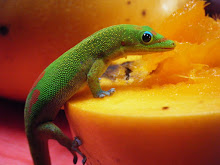

Pu’u Wa’awa’a is a Tropical dry forest and also the name of the ahupua’a. The islands are divided into districts called Moku. Each Moku is further divided into ahupua’a. The Big Island has six Moku with several ahupua’a in each Moku. An ahupua’a is a section of land stretching from the mountains to the sea. Their borders usually follow natural boundaries such as mountain ridges or streams.

In old times, this was a system to help people manage, use, and care for the resources of the land wisely. Each ahupua`a contained the resources the human community needed, from fish and salt, to fertile land for farming taro or sweet potato, to koa and other trees growing in upslope areas. Villagers from the coast traded fish for other foods or for wood to build canoes and houses.


Specialized knowledge and resources peculiar to a small area were also shared among ahupua`a. The size of the ahupua`a depended on the resources of the area with poorer agricultural regions split into larger ahupua`a to compensate for the relative lack of natural abundance.

("Poliahu" by Herb Kane)

("Planter" by Herb Kane)

“The ancient ahupua`a, the basic self-sustaining unit, extended elements of Hawaiian spirituality into the natural landscape. A midst a belief system that emphasized the interrelationship of elements and beings, the ahupua`a contained those interrelationships in the activities of daily and seasonal life.”
("Kamehameha at Kamakahonu" by Herb Kane)

Pu’u Wa’awa’a sits in North Kona on the northern flank of Hualalai Volcano and stretches from Kiholo Bay up to 6,500ft.


Pu’u wa’awa’a also refers to a cinder cone that looks over the stoic forest. Running up to the 3,000ft+ summit along with dreadlocked sheep offers expansive views and burning lungs! This ahupua’a provides some of my favorite resources, trails and waves.



































1 comment:
Wonderful information and beautiful views!
Post a Comment